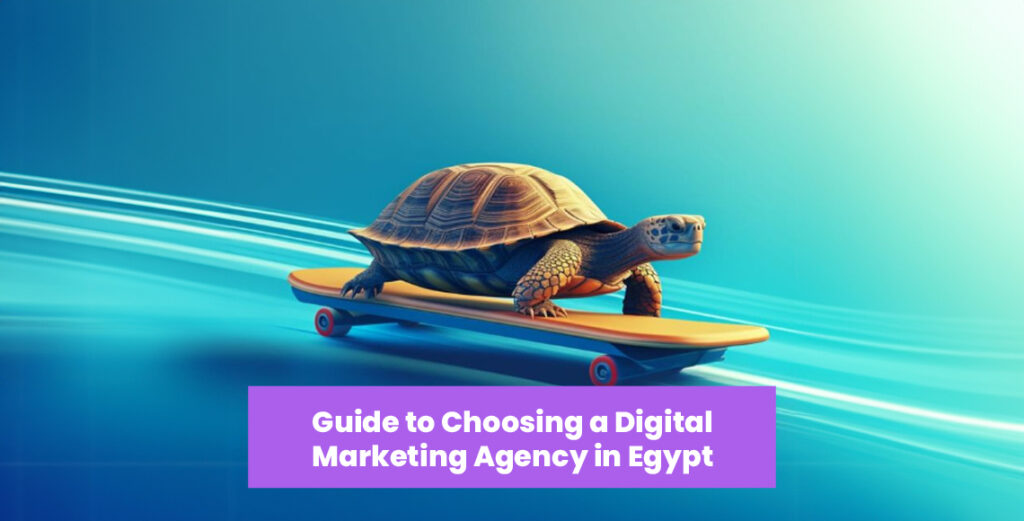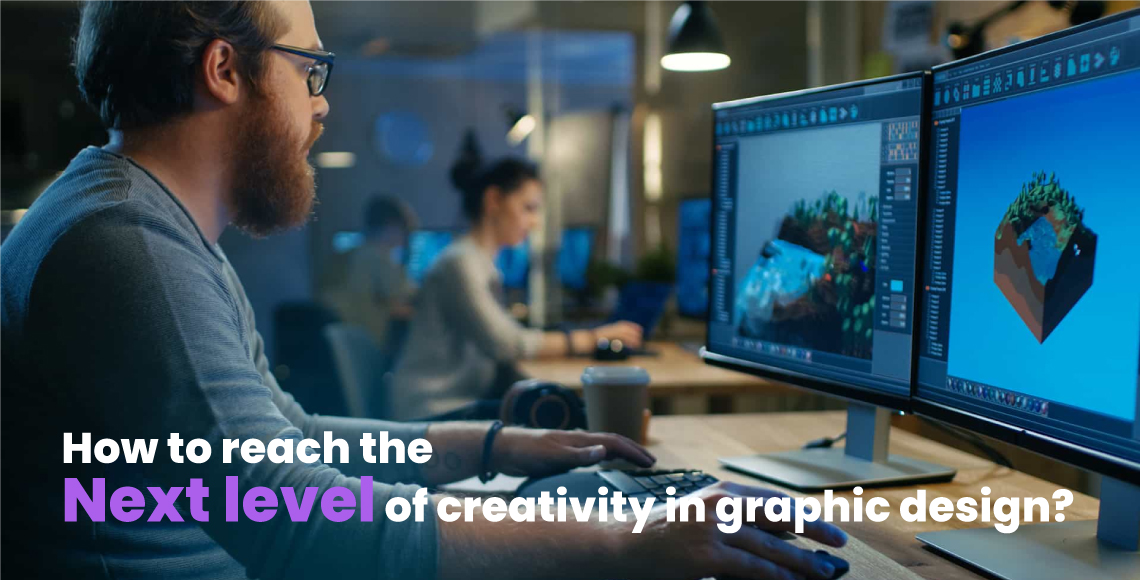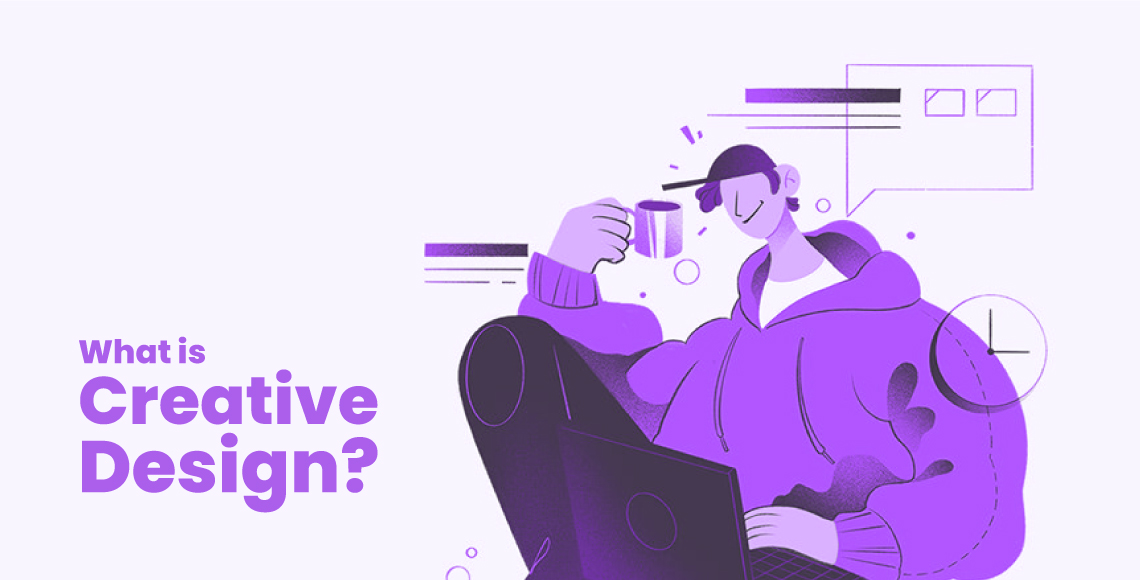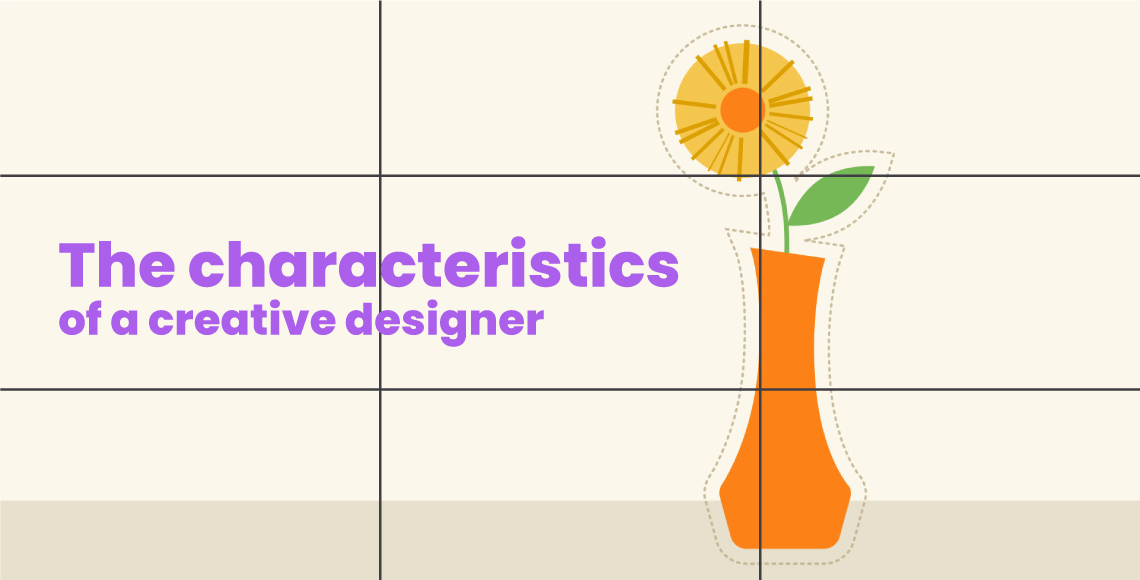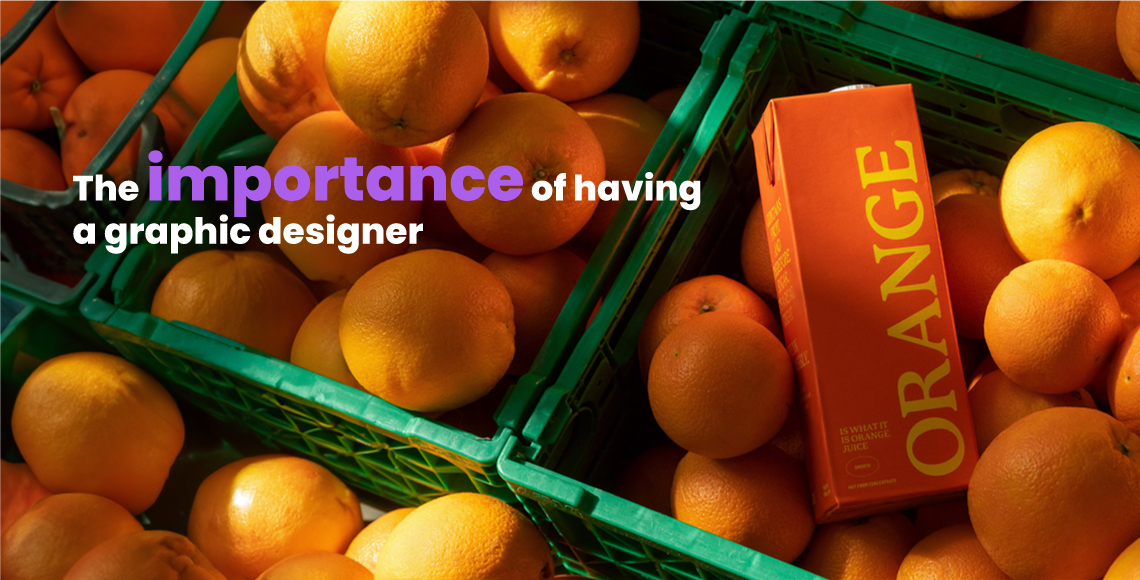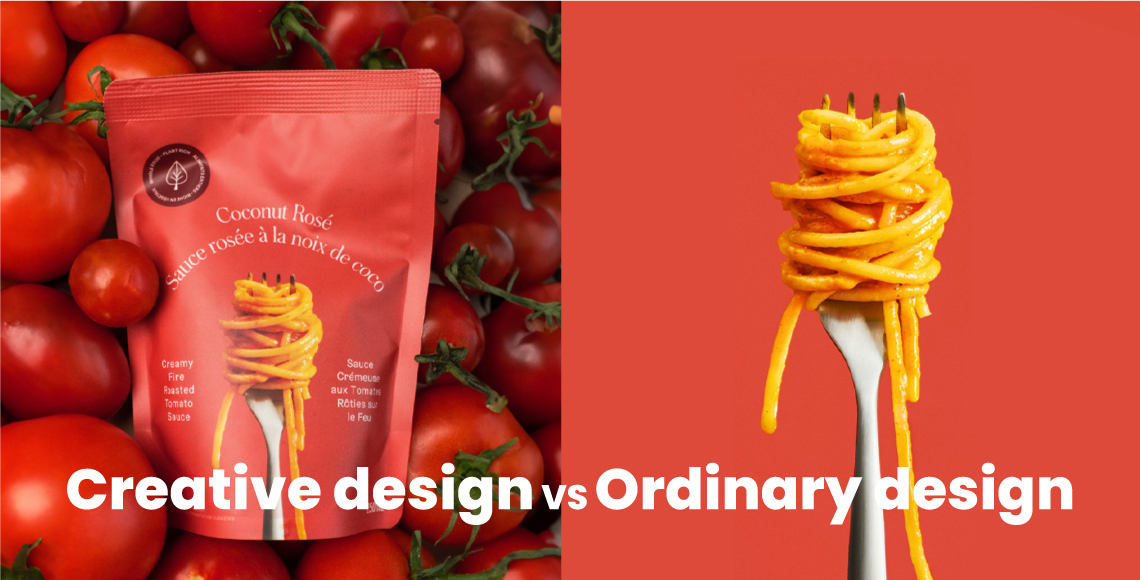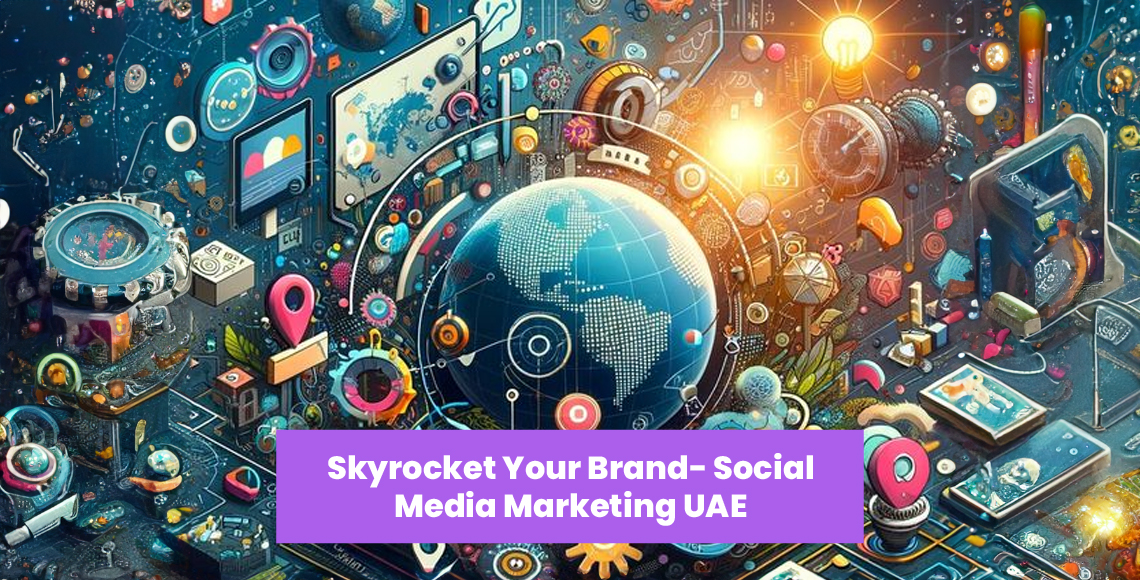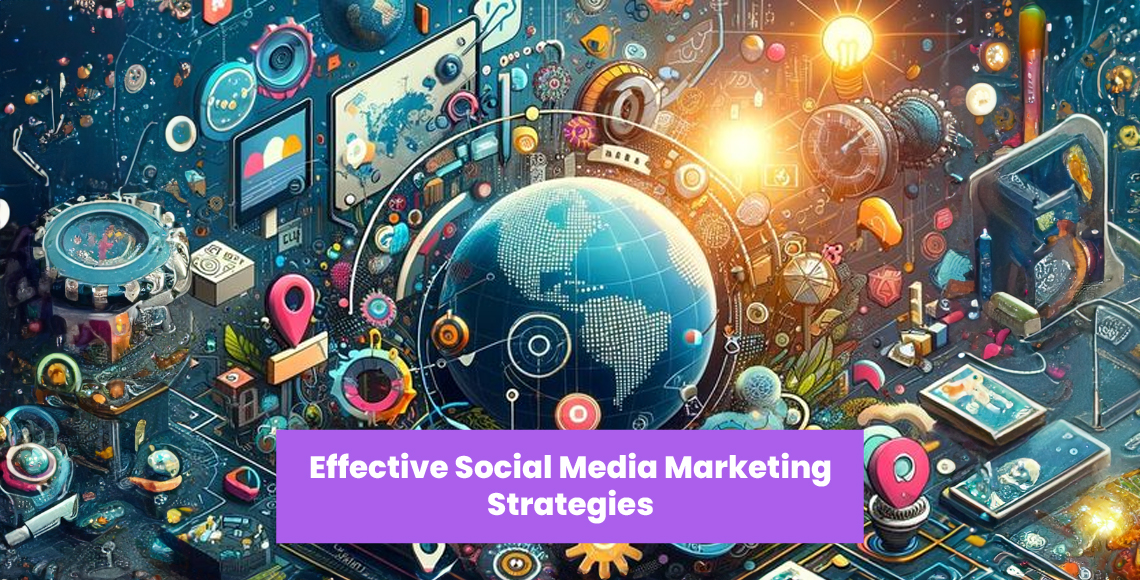You can reach the next level of creativity in graphic design, but first, you have to know what are the characteristics of a creative designer.
Lately, any type of content on the internet needs some graphics. To be more appealing to the targeted audience.
Whether it’s web content, social media content, or other types, it has to be illustrated through a suitable design. So, a creative graphic designer will be highly demanded.
And through the following lines we will discuss how to hire a creative designer, and if you are a designer; how to reach the next level of creativity in graphic design.
What is creative design?
A creative design is a visual or artistic representation of an idea or concept that communicates a specific message or emotion to its intended audience. Creative design can be applied to a wide range of industries and mediums, including graphic design, fashion design, product design, interior design, and more.
The term “creative design” often refers to designs that are innovative, unique, and outside of the box. A creative design may incorporate unexpected elements, colors, or materials to create a memorable and impactful visual experience for the viewer.
In general, a successful creative design should:
- Communicate its intended message or concept to the audience.
- Visually compelling and aesthetically pleasing.
- Appropriate for its intended use or context.
- Be original and stand out from other designs in its industry or medium.
- Technically sound and functional, if it is intended for practical use.
The characteristics of a creative designer
It is not just a profession or an industry; it’s an art. And there are many graphic designers all over the world, but not all of them have real talent or can keep up with the latest trends in this art.
But you can differentiate the creative one; by knowing the creative designer’s characteristics.
Imaginative
A creative design demands a designer with a vivid imagination, allowing them to develop original and innovative designs that stand out.
Curious
A designer should be inquisitive, always seeking new ideas and inspiration, and keeping up with the latest design trends and technologies.
Detail-oriented
The ability to pay close attention to detail is essential in graphic design, as even the slightest mistake can ruin the entire design.
Artistic
The designer should possess a strong sense of artistry, which involves the ability to use color, composition, typography, and other elements of design to create visually stunning graphics.
Problem solver
He/She should be able to identify and solve design challenges, whether it’s finding the right visual elements, selecting the right fonts or colors, or meeting a client’s specific needs.
Communication skills
Designer has to communicate effectively with clients, stakeholders, and team members to understand their design requirements and to explain their design decisions.
Adaptability
The designing industry is constantly evolving, so a designer should be adaptable and willing to learn new skills and techniques to stay relevant.
Time management
Deadlines are a critical aspect of graphic design projects, so creative designers should have excellent time management skills; to ensure that they can complete their work within the given timeframe.
The importance of having a graphic designer
Designers are responsible for creating visual concepts, using computer software or by hand, and smart devices; to communicate ideas that inspire, inform, or captivate consumers.
They work with clients and team members to develop design concepts and graphics for a wide range of products, including websites, logos, brochures, advertisements, packaging, and other marketing materials.
The specific tasks of a designer can vary depending on their area of specialization, but some common responsibilities may include:
- Meeting with clients or team members to determine project requirements and goals.
- Developing design concepts and graphics that meet project objectives and communicate the desired message to the target audience.
- Using software tools to create digital designs and artwork, or producing hand-drawn sketches or prototypes.
- Selecting colors, fonts, images, and other design elements to create visually appealing and effective designs.
- Collaborating with other designers, writers, and production team members to ensure that design concepts are consistent with overall project objectives.
- Reviewing and making revisions to designs based on client feedback and project requirements.
- Preparing final designs for production, including preparing files for print or digital delivery.
The creative design related jobs hierarchy
It’s important to note that job titles and responsibilities can vary widely depending on the industry, and some organizations may not have all of these levels in their job hierarchy. The job hierarchy for creative designers can vary depending on the organization or company they work for, but here are some common roles:
Junior Designer
A junior designer is typically an entry-level position. He/She may work under the supervision of a more experienced designer or art director and focus on creating simple design elements, such as logos or basic marketing materials.
Graphic Designer
Typically have more experience than junior designers and can work independently on design projects. They may still collaborate with other designers or team members, but they have the skills and expertise to take on more complex design projects.
Senior Designer
Is a more experienced designer who may oversee the work of other designers or work on higher-level design projects, such as creating branding campaigns or developing marketing strategies. Also, have more client interaction and be responsible for managing client relationships.
Art Director
Are responsible for overseeing the visual elements of a project or campaign. They work closely with designers and other team members to ensure that the design concepts are aligned with the overall project objectives and that the final designs are of the highest quality.
Creative Director
Is responsible for the overall creative direction of a project or organization. He/She may oversee multiple design teams, work with clients to develop creative strategies, and manage budgets and timelines.
Chief Creative Officer
A chief creative officer is responsible for the creative direction of an entire organization or brand. Who works closely with executives to develop creative strategies and oversee the execution of those strategies across all departments and projects.
Tips to enhance your creativity
Remember, creativity is not something that can be forced or rushed. Take the time to explore and experiment, and don’t be afraid to make mistakes along the way.
With practice and persistence, you can reach the next level of creativity in graphic design.
And there are several ways to enhance your creativity in designing and reach the next level. Here are a few tips:
Explore new techniques and styles
Don’t limit yourself to the same style and techniques you’re used to. Try experimenting with different styles, mediums, and techniques to challenge yourself and expand your creative range.
Keep up with the latest design trends
Stay up-to-date with the latest design trends and innovations. Follow design blogs, attend design conferences and exhibitions, and keep an eye on what other designers are doing to gain inspiration.
Learn new software and tools
Learning new software and tools can open up new avenues for creativity. Experiment with new tools, plug-ins, and software to see how they can improve your workflow and creativity.
Collaborate with other creatives
Working with other creatives, such as illustrators, writers, and photographers, can help you gain new perspectives and ideas. Collaborating can also help you build relationships and networks within the design community.
Take breaks and recharge
Taking breaks and stepping away from your work can help you recharge your creativity. Go for a walk, read a book, or try a new hobby to help you refocus and come back to your work with fresh ideas.
Set creative challenges for yourself
Challenge yourself with creative exercises and prompts. For example, you can try designing a logo using only one color or create a poster using only typography. These challenges can help you develop new skills and push the boundaries of your creativity.
Get feedback
Share your work with others and ask for feedback. Getting feedback from other designers or even clients can help you see your work from a different perspective and identify areas for improvement.
Keep a sketchbook or visual journal
Which can help you capture ideas and inspiration as they come to you. This can be a useful tool for developing and refining your ideas, as well as keeping track of your progress.
Study design history
Learning about design history and the work of other designers can help you gain a deeper understanding of design principles and techniques. Studying the work of masters in the field can also inspire your work.
Practice regularly
Practice makes perfect, and the more you practice your design skills, the more creative and proficient you will become. Set aside time each day or week to practice your design skills and work on personal projects to develop your creativity.
Read also: How to build a branding in 6 steps logo design, and name
Creative design VS ordinary design
The main difference between a creative design and an ordinary graphic design is the level of innovation, originality, and impact.
While ordinary graphic design can be effective in conveying a message or promoting a product, it often follows established design conventions and may not be as visually striking or memorable as a creative design.
Here are some specific differences between creative design and ordinary graphic design:
1- Originality
Creative design is typically highly original and may incorporate unexpected elements, unconventional layouts, or unusual materials.
Ordinary graphic design may rely more on established design conventions and may be less innovative.
2- Impact
A creative design aims to have a strong visual impact and leave a lasting impression on the viewer. It is often designed to evoke emotions, inspire action, or make a statement.
Ordinary graphic design may be more straightforward and focused on conveying a message or promoting a product.
3- Versatility
A creative design may be more versatile and adaptable than ordinary graphic design. It may be used in a variety of contexts, from branding and advertising to art and fashion.
Ordinary graphic design may be more specialized and tailored to a specific industry or medium.
4- Artistry
Creative designs often showcase a high level of artistic skill and creativity. They may incorporate hand-drawn elements, digital illustrations, or other forms of visual art.
And ordinary graphic design may be more focused on typography, layout, and other technical aspects of design.
The creative design during the AI era
The future of creative design during the AI era is likely to be a combination of human creativity and AI-powered tools. While AI can certainly assist designers in generating ideas, enhancing efficiency, and improving accuracy, it cannot replace human creativity and innovation.
In the coming years, AI-powered design tools are likely to become more sophisticated, capable of producing higher-quality designs and providing more personalized solutions. For example, AI can analyze user data to create custom designs tailored to individual preferences, or it can generate design concepts based on a set of specific parameters.
However, designers will still need to bring their unique perspectives, intuition, and critical thinking to the table to create truly original and innovative designs or especially -creative design-.
AI can help streamline the creative design process, but it cannot replace the value of human insight, empathy, and experience.
Moreover, as AI continues to evolve, it may even enable designers to explore new creative possibilities that were previously beyond human capabilities. For example, AI-powered tools can create complex patterns or designs that would be difficult or impossible for humans to do manually.
Overall, graphic designers use their creative skills and technical expertise to design visual elements that communicate specific messages to audiences in various industries, including advertising, marketing, publishing, and more.
And a creative design is an expression of artistry and innovation, which aims to engage, inspire, and influence its viewers.
Also, while both creative design and ordinary graphic design have their place in the world of design, creative designs tend to be more innovative, impactful, and versatile than ordinary graphic design.
And the future of creative design during the AI era is likely to involve a symbiotic relationship between human creativity and AI-powered tools. AI can augment and enhance human creativity, but it cannot replace it. Designers who can harness the power of AI while maintaining their unique perspectives and creative flair are likely to be the most successful in this new era.
At Royal Vision Media Advertising Agency , we believe that every business has a story to tell, and we’re here to help you tell yours in a way that resonates with your audience.
Contact us today, and spread your business story!



